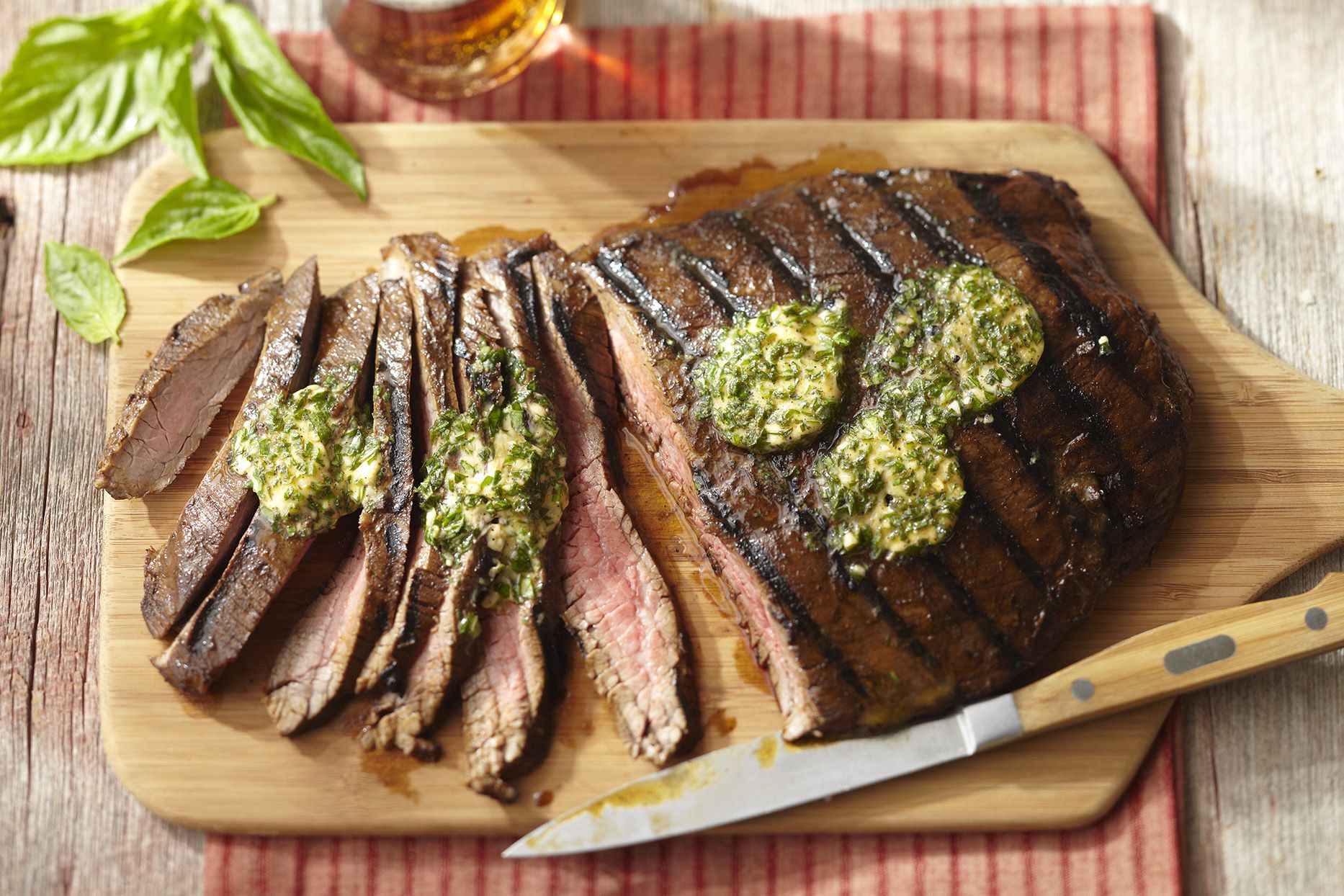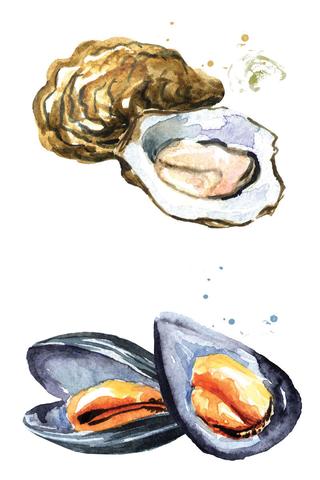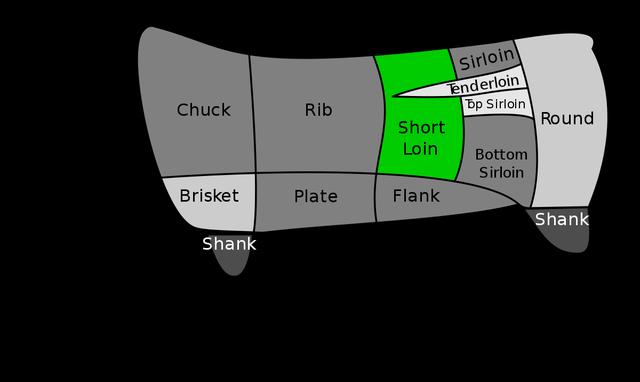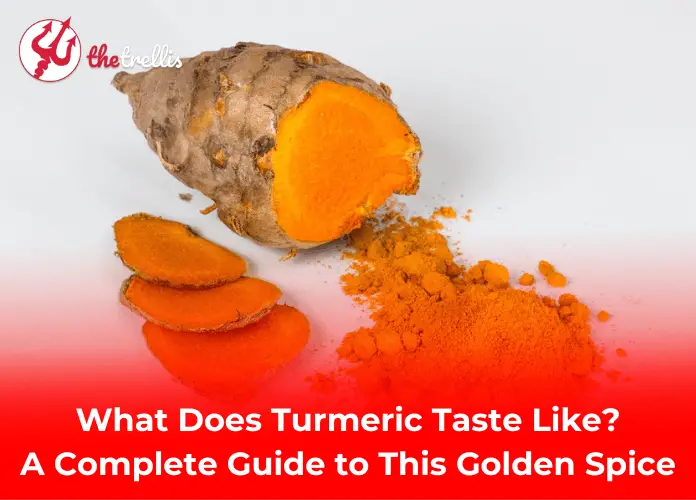
You may have spotted Turmeric, a bright yellow spice, at your local market or seen its popularity in kitchens worldwide. So are you curious about “What does Turmeric taste like?”. Let’s explore the distinctive taste of Turmeric, and its health benefits, and discover how you can use it effectively in your cooking.
What is Turmeric? Origin of this spice
Turmeric (Curcuma longa) is a rhizome – a type of root that grows horizontally underground, similar to ginger. Native to South Asia, this vibrant spice has been used for over 4,000 years, particularly in Indian cuisine and traditional medicine.
Fresh Turmeric looks similar to ginger root but reveals a striking orange flesh when cut open. To create the powdered spice we commonly find in stores, the fresh rhizomes are boiled, dried in the sun, and ground into a fine, brilliant yellow-orange powder.
India remains the world’s largest producer of this remarkable spice, though it’s now cultivated throughout the tropics.
What does Turmeric taste like?
At its core, it presents an earthy, pungent flavor with a musky essence that gives depth to any dish it’s added to. But there’s more to this golden spice than just its primary notes. Each Turmeric form offers distinct taste experiences.
Based on an analysis of its appearance, here is the answer to “What does Turmeric taste like?“:
1. What does raw Turmeric taste like?
Fresh Turmeric offers an entirely different experience. It tastes brighter and more alive than the powder. What you’ll notice when you first taste Turmeric is a slightly bitter undertone, followed by a peppery finish that lingers pleasantly on your palate.
Some people say it reminds them of a subtle hint of citrus, while others compare its taste to an intense mustard. No single description fully captures its taste. But this complexity is what makes Turmeric such an intriguing spice to work in the kitchen.
When grated or minced, raw Turmeric releases an almost ginger-like zest, though milder and with its character. The fresh root maintains that signature earthy undertone but presents less bitterness than the powder, and offers a more layered taste experience.
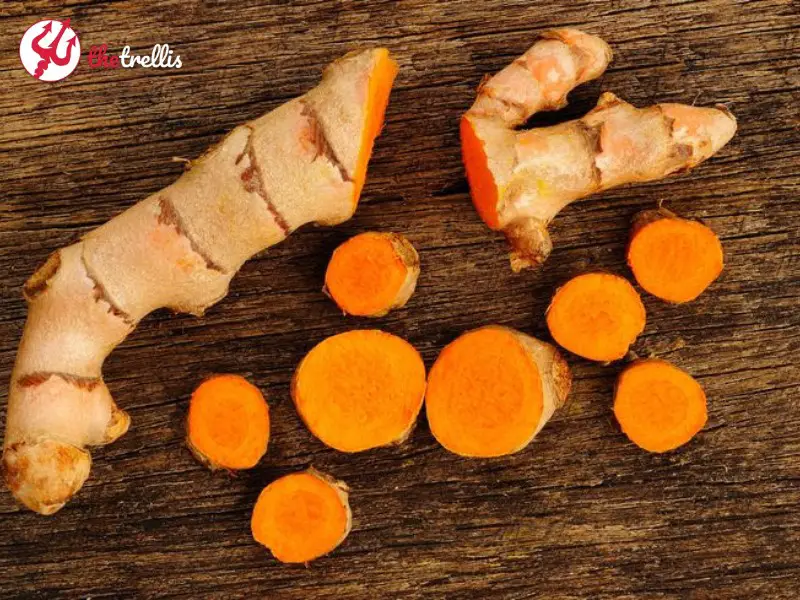 What does Turmeric taste like? Fresh Turmeric has a characteristic knobby appearance and rough skin. The deep orange-yellow flesh offers a distinctive earthy, slightly bitter, and peppery flavor.
What does Turmeric taste like? Fresh Turmeric has a characteristic knobby appearance and rough skin. The deep orange-yellow flesh offers a distinctive earthy, slightly bitter, and peppery flavor.
2. What does Turmeric powder taste like?
The Turmeric Powder, commonly found in grocery stores, has a concentrated flavor profile. When you open a fresh jar of Turmeric powder, you’ll immediately notice its intense aroma – earthy and slightly spicy, with that characteristic musky note that sets it apart from other spices.
The powder form tends to be more bitter than its fresh counterpart, and its flavors are more concentrated. This explains why recipes typically call for small amounts – usually just a teaspoon or less – as too much can overwhelm a dish.
Most home cooks start with the powder. It’s easier to find and lasts longer. It’s also simpler to measure and store. The Turmeric powder needs time to meld with other ingredients and release its flavors gradually. Thus, it is ideal for flavoring dishes like curry blends, soups, stews, marinades, and rice.
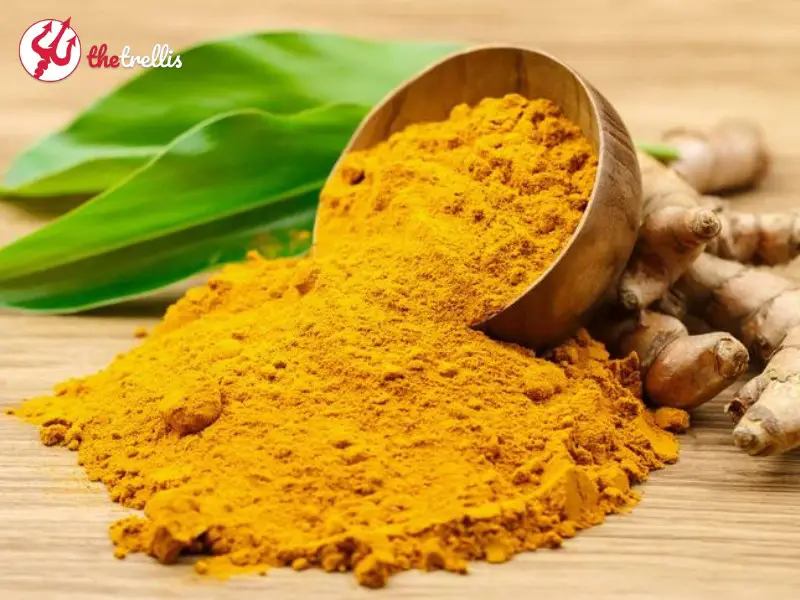 What does Turmeric powder taste like? Turmeric powder has a more bitter and stronger taste than fresh Turmeric. It is widely used to add color and flavor to various dishes.
What does Turmeric powder taste like? Turmeric powder has a more bitter and stronger taste than fresh Turmeric. It is widely used to add color and flavor to various dishes.
The health benefits behind Turmeric
Beyond the question “what does Turmeric taste like“, Turmeric has earned recognition for its impressive health-promoting properties. The heart of Turmeric’s wellness properties lies in its main active compound – curcumin.
Here’s what makes Turmeric particularly special for health:
- Protect overall health: through its anti-inflammatory and antioxidant properties.
- Support digestive health
- Help with joint mobility
- Enhance immune system function.
The good news is that adding this flavorful spice to your cooking allows you to enjoy its culinary properties and health advantages in one delicious way.
Balancing Turmeric’s flavor in cooking
One of the most important things to understand about “what does Turmeric taste like” is that it rarely works best alone. Its bitter notes and potent flavor usually need to be balanced with other ingredients to create harmonious dishes. Here’s how to help it shine:
- Mix it with mellowing fats like coconut milk, ghee, melted butter, or olive oil.
- Pair it with complementary spices such as cumin, cinnamon, and paprika.
- Use it with fresh ginger, which enhances its warming qualities.
- Accompany with black pepper, which not only complements the flavor but also helps with nutrient absorption.
Professional chefs and home cooks alike know that the key to using Turmeric successfully is moderation. Start with small amounts and adjust to taste, as its flavor can quickly dominate a dish if you’re not careful.
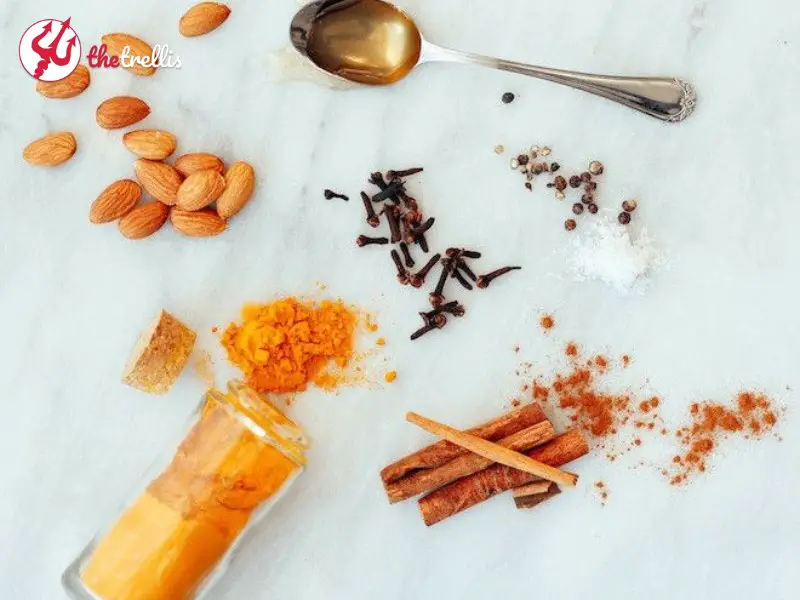 Pairing Turmeric with a variety of spices results in a rich and harmonious blend of tastes.
Pairing Turmeric with a variety of spices results in a rich and harmonious blend of tastes.
Culinary applications: making the most of Turmeric’s flavor
Turmeric is not only commonly associated with traditional Indian curries. Its versatility extends far beyond that. This spice can enhance a wide variety of dishes:
Traditional Uses:
- Rice dishes and pilafs
- Curries, soup, and stews
- Pickled vegetables
- Spice blends
- Marinades for meat and vegetables
Modern Applications:
- Golden milk lattes
- Smoothies
- Tea infusions
- Healing broths
- Contemporary fusion dishes
- Salad dressings
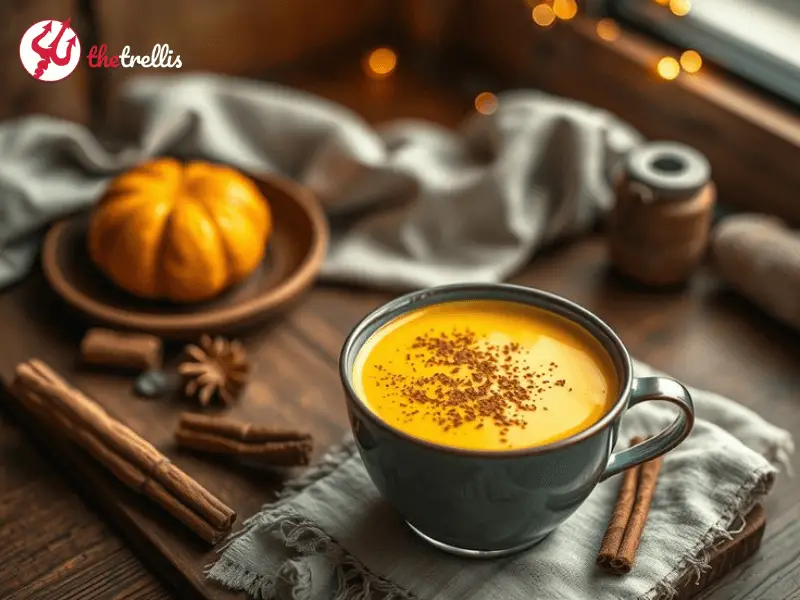 A golden milk latte – a beverage prized for its flavor and health benefits, is created by blending Turmeric with warm milk and other spices.
A golden milk latte – a beverage prized for its flavor and health benefits, is created by blending Turmeric with warm milk and other spices.
Tips for cooking with Turmeric
Here are top recommendations to cook with Turmeric properly while retaining most of its unique flavor:
- Start Small: Begin with ¼ to ½ teaspoon in recipes and adjust according to taste.
- Heat Activation: Heat Turmeric in oil or ghee before adding other ingredients to release its full flavor potential.
- Balance the bitterness: Use sweet, creamy, or fatty ingredients to counteract Turmeric’s bitter notes.
- Consider Color: Remember that Turmeric will turn everything yellow hue when it touches – embrace its natural dyeing properties in cooking. But protect your countertops and clothing.
- Smart Pairing: Always include black pepper when cooking with Turmeric, as this combination enhances both flavor and nutritional benefits.
Guidelines for storing Turmeric
To maintain Turmeric’s optimal flavor, proper storage is crucial.
Keep the powder in an airtight container. Store it away from light. Use within 6 months.
For powdered Turmeric:
- Store it in an airtight container, and keep it away from direct light and heat.
- Place in a cool, dry spot
- Use within 6-8 months for the best flavor
For fresh Turmeric:
- Wrap in paper towels and place in a sealed bag
- Store in the refrigerator
- Use within three weeks when wrapped properly
- Optional: Freeze for up to six months
Quick answers to common questions
1. How much Turmeric should I use in cooking?
Start with ¼ teaspoon for most dishes, adjusting based on your taste preferences.
2. Can I substitute fresh Turmeric for powder?
Yes! You absolutely can. Use about 1 tablespoon fresh grated Turmeric for every 1 teaspoon of powder.
3. Why does my Turmeric taste bitter?
Bitterness is natural in Turmeric. Balance it with fats, sweetness, or other spices.
Final Thoughts
Turmeric offers a warm, slightly spicy, and somewhat bitter taste. But to describe it precisely “What does Turmeric taste like?“, it’s a complex blend of earthy, peppery, and a hint of citrus. Whether you choose powder or fresh, this golden spice brings both brilliant color and fascinating flavor to your cooking. It can transform simple dishes into memorable meals. Don’t be afraid to experiment with different amounts and combinations until you find the perfect balance when cooking with this ancient spice. Discover more culinary insights and spice wisdom by following The Trellis.
Learn More About Grilling
If you want to learn more about grilling, check out these other helpful resources!


